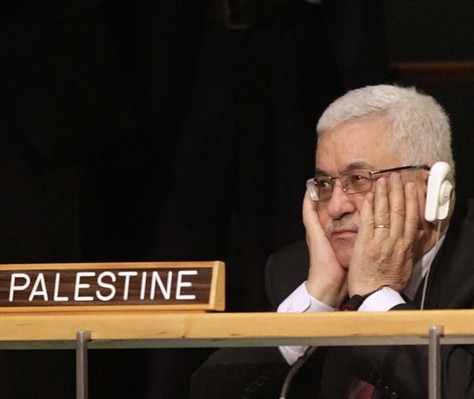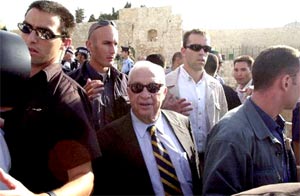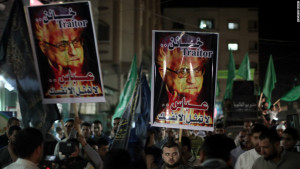Some Weak Tea for the Third Intifada
 A Crossroads at the UN: Palestinian Liberation Organization President Mahmood Abbas's presidency has been strewn with violence and gridlock. Image.
A Crossroads at the UN: Palestinian Liberation Organization President Mahmood Abbas's presidency has been strewn with violence and gridlock. Image.

Mahmood Abbas, President of the Palestinian Liberation Organization, Palestine’s ruling party, did the world community a favour by chucking a barrel of oil into the fire that is Middle East chaos. At the 70th session of the United Nations General Assembly, Palestine, a state in the UN’s eyes since 2011, claimed “[Palestine] cannot continue to be bound by [The Oslo Accords]… with Israel and Israel must assume fully all its responsibility as an occupying power.” Gone, Abbas says: “The Oslo Accords are no longer relevant and we want to leave them in the past”.

To the innocent ear, Abbas’s words seem bellicose and incendiary. As a result, it is understandable that the headlines decry this as the ignition of the Third Intifada. However, taken in the greater context of the Israeli-Palestinian dynamic of the last decade, the situation is more relaxed and tepid than would seem.The Oslo Accords were signed in the early 1990s during a different era of Middle Eastern politics. When Bill Clinton, Palestinian President Yasser Arafat, and Israeli Prime Minister Yitzhak Rabin shook hands in Oslo, even the pundits breathed easy. “Peace in the Middle East” showed more hope than as just a slogan. Resting on large bilateral concessions, a two-state solution for once seemed attainable. The legacy of these diplomatic grandmasters has not been forgotten on either side. Arafat, despite being posthumously investigated for the embezzlement of billions of dollars, is still considered the central figure of Palestine’s cause. Rabin, who was assassinated by an extremist who was against compromise with Palestine, is considered an enshrined hero among Israelis.The situation changed by the start of the new millennium. Moderates like Rabin got replaced by hardliners like Benjamin Netanyahu (current Prime Minister, who had his first stint in the position in the late 90s). Netanyahu’s policy from 1997 has been to circumvent the Oslo Accord. Netanyahu speeches frequently denounce the agreement as hasty and impractical. This was punctuated by the violation of a key tenet of the agreement – continued settlements by Israelis in Palestine. This set off a chain reaction that led to a general uprising against Israel from 2000 to 2005, known as the Second Intifada (the First Intifada being the conflict that precipitated the Oslo Accords). These five years were filled with unbridled attacks, protests, and mass incursions. The general consensus is that both sides were at fault, with Netanyahu as the provocateur and Arafat as the instigator.

The state of affairs now is grim but stable. Since 2004, Arafat has been replaced with Mahmood Abbas, an older and less charismatic head of the Palestinian Liberation Organization. Abbas inherited a situation none could wish on their enemy. Gaza, a strip of land controlled by the terrorist organization, Hamas, had recently been isolated by Israel. Palestinians were prepared to launch wholesale civil war. On top of this, the outside world was exploring pre-emptive measures. Abbas had to perform damage control to tame these ills of the domain he now oversaw. His solution was to take the pacifist route. His tenure was characterised by the conviction of a return to a peace process and the establishment of a two-state solution. His electorate was no longer the same optimistic crowd that was in 1993. Most Palestinians, enraged by the events of the first half of the decade, now desired Palestine to incorporate Israel. This was further compounded by Netanyahu’s return to power in 2009. If there is anything both hold in common, it is a common disbelief in the relevance of the Oslo Accords. Abbas has already declared his intention to leave his post. Tired and cynical, he is quite right in leaving at a time of intensified settlement and increasingly acrimonious rhetoric. To add insult to injury, Netanyahu’s recent re-election has been linked to fresh stabbings, automobile attacks, and gun violence. Relations seem to be as sour as in 2000, when the Second Intifada began. In the midst of it all, Abbas now disavows any adherence to Oslo. Our readers, however, need not panic.There are many differences between then and now that make a Third Intifada implausible in today’s conditions. The first of them lies within the government’s stake in violence. Abbas does not come close to approximating Yasser Arafat; less than half of Palestinians support him. The First and Second Intifadas were conducted with ardent government support, as well as funding and resourcing from foreign governments and organizations (Hezbollah, Hamas, etc.). Abbas is too weak for the belligerent Palestinians, too stubborn for the moderates. Even if his cabinet desired an Intifada that would rival the first two, he does not have the appeal, charisma, or base to do so.
Perhaps the biggest obstacle to violence in Palestine’s rejection of Oslo is the attitude of most Palestinians. In the days after the UN address, nothing has changed. Abbas pulled no strong moves, nor was a Palestinian insurgency organizing from within. Foreign governments will not work with Abbas, as he is wavering and retiring. Israel has been reinforced with technologies from Britain, Russia, and America. Any attempt at an equally impressive Intifada will be crushed fairly quickly. If anything, Abbas’s words were a parting sneer, a declaration of intent for the rest of Palestine. Abbas knows well that he cannot introduce effective policies so late. His speech at the UN General Assembly should be interpreted as a means of conveying a message to Israel. The message to come out of that speech in New York that day desires to state the end of Palestinian complacency. If Palestine did not take control of its future in the past, it will now. The only danger inherent to this is that it may elicit a nasty response from Israel should any action be taken. Any further individually-orchestrated attacks will be linked to this speech and will be considered attacks by the Palestinian Authority. Netanyahu is quite easy to provoke. Abbas pointedly did just that.
The Third Intifada is probably far away, if not simply impossible. This does not mean that the tug-of-war has ended between Abbas and Netanyahu. Abbas was keen on being passive and monolithic for most of his presidency. We now got to see that Abbas can pack a harder punch. As Abbas’s chapter in Palestinian history ends, hindsight becomes more sympathetic to him. Abbas was never armed with more than strong will and persistence against Israel’s organization and military. The most he could do is throw in some sharp-edged rhetoric. This does not necessarily mean he is powerless when it comes to changing Palestine’s intent and posture. Abbas did exactly that at the United Nations. Using the tools at his disposal, Abbas crafted the most poignant message he could for Israel. It is sure to ruffle some feathers in Jerusalem. For Palestine, that is an incredible step forward. While Abbas’s speech may have been some weak tea for the Third Intifada, it is quite a strong brew for the Palestinian state.
